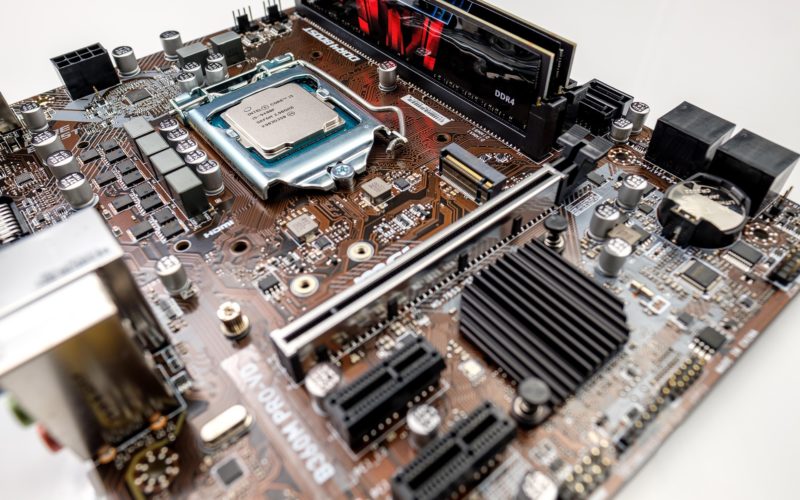Artificial intelligence (AI) has rapidly evolved from a theoretical concept to an essential part of modern society, influencing industries ranging from healthcare and finance to transportation and entertainment.
While AI has made remarkable strides in academic and research settings, one of the greatest challenges remains its practical implementation in real-world scenarios. Many organizations struggle to bridge the gap between AI theories, models, and algorithms and their effective deployment in business and societal applications.
This divide arises due to various factors, including the complexity of AI models, the lack of real-world training data, ethical and regulatory concerns, and the challenge of integrating AI into existing infrastructure.
Addressing these obstacles requires a collaborative effort between academia, industry, policymakers, and developers. By focusing on education, research, and applied methodologies, the AI landscape can transition more seamlessly from theoretical advancements to tangible innovations.
The Role of Advanced Education in AI Development
One of the critical factors in the successful transition of AI from theory to practice is the role of higher education in developing cutting-edge solutions. Universities and research institutions provide the foundational knowledge and skills that AI professionals need to create sophisticated models capable of solving real-world problems.
These institutions also act as incubators for AI innovations, fostering an environment where students and researchers can explore novel approaches to complex challenges. AI PhD programs play a crucial role in this process by equipping scholars with the expertise to bridge the gap between theoretical advancements and practical applications.
These programs emphasize rigorous research, experimentation, and problem-solving methodologies that enable graduates to develop AI solutions that can be seamlessly integrated into real-world industries.
Additionally, collaborations between academic institutions and businesses allow researchers to test their models in practical settings, ensuring that AI innovations do not remain confined to theoretical frameworks but instead contribute to industry-wide advancements.
Challenges in Transitioning AI from Theory to Practice
Despite significant progress in AI research, several challenges hinder its widespread implementation. These obstacles must be addressed systematically to ensure AI reaches its full potential in real-world applications.
1. Lack of High-Quality, Real-World Data
AI models rely heavily on data for training and optimization. While theoretical research often uses structured datasets, real-world data is often unstructured, noisy, and incomplete. This discrepancy makes it difficult for AI systems to function reliably in practical settings. Moreover, many industries operate under strict privacy and security regulations, limiting access to large-scale data needed for training robust AI models.
To overcome this challenge, organizations must develop secure and ethical data-sharing frameworks that allow AI researchers to access real-world datasets while maintaining compliance with privacy laws. Techniques such as federated learning and synthetic data generation are emerging as viable solutions for enhancing AI training without compromising data security.
2. Ethical and Regulatory Concerns
AI applications often raise ethical concerns related to bias, transparency, and accountability. Theoretical research does not always account for real-world biases present in datasets, leading to unintended consequences when AI systems are deployed. For instance, biased AI models in hiring processes or loan approvals can reinforce existing societal inequalities.
Addressing these issues requires the development of transparent AI models with explainable decision-making processes. Regulatory frameworks should also evolve alongside AI advancements to ensure ethical considerations are embedded into AI systems from the early stages of development. Collaboration between regulators, AI researchers, and industry leaders is essential for creating guidelines that promote responsible AI use.
3. Difficulty in Integrating AI into Existing Infrastructure
Many businesses and organizations operate on legacy systems that were not designed to accommodate AI technologies. Integrating AI into these environments often requires significant modifications, making the transition costly and complex. Additionally, AI models trained in controlled academic settings may not perform as expected when introduced into dynamic business environments.
To address this issue, companies should focus on developing modular AI solutions that can be gradually integrated into existing infrastructures. Scalable AI models and cloud-based AI services can facilitate smoother adoption without requiring complete system overhauls. Moreover, collaboration between AI engineers and industry professionals ensures that AI solutions are designed with practical implementation in mind.
Bridging the Gap Through Applied AI Research
Applied AI research focuses on translating theoretical models into real-world solutions by testing and refining algorithms in practical settings. Unlike traditional AI research, which prioritizes innovation in machine learning techniques, applied AI research emphasizes functionality, scalability, and usability.
1. Industry-Academia Collaborations
Partnerships between universities and businesses create opportunities for AI researchers to work on industry-relevant challenges. By participating in real-world projects, researchers gain insights into practical constraints that impact AI implementation. Companies benefit from academic expertise, leading to more effective AI solutions tailored to specific industry needs.
Many organizations now establish AI research labs in collaboration with universities, allowing researchers to experiment with real-world applications. These collaborations help bridge the gap between theoretical advancements and business-driven AI solutions.
2. AI in Product Development and Deployment
To ensure AI models function effectively in real-world environments, companies must adopt a systematic approach to product development. This involves rigorous testing, validation, and iterative improvements based on user feedback. AI-driven products should be designed with usability in mind, allowing end-users to interact with AI systems intuitively.
Additionally, AI deployment should consider scalability and reliability. Businesses must ensure that AI solutions can handle real-world data variability and adapt to changing environments. This requires continuous monitoring and updates to maintain optimal performance.
3. The Role of AI in Decision-Making
One of the most impactful applications of AI in the real world is its role in decision-making. AI-powered decision support systems assist businesses and organizations in making data-driven choices, optimizing processes, and predicting outcomes with greater accuracy. These systems are particularly valuable in industries such as finance, healthcare, and supply chain management, where precise decision-making is crucial.
However, decision-making AI must be transparent and interpretable to gain the trust of stakeholders. Explainable AI (XAI) techniques help users understand how AI arrives at specific conclusions, fostering confidence in AI-driven insights. As AI continues to evolve, enhancing its decision-making capabilities while ensuring accountability remains a top priority.
The Future of AI in Practical Applications
AI is expected to play an increasingly significant role in various industries as technological advancements continue. Emerging trends such as autonomous systems, generative AI, and AI-driven automation are reshaping how businesses operate. However, for AI to reach its full potential, continued efforts are needed to bridge the gap between theoretical models and practical applications.
Future AI innovations will likely focus on improving adaptability, reducing bias, and enhancing AI-human collaboration. As AI systems become more sophisticated, they must be designed with user-friendly interfaces that enable seamless interaction between humans and machines. The integration of AI with edge computing, the Internet of Things (IoT), and robotics will further expand AI’s real-world impact.
Moreover, ongoing research in AI ethics, fairness, and regulatory compliance will shape how AI is adopted across industries. Companies that prioritize ethical AI development will gain a competitive edge by fostering trust among consumers and stakeholders.
All in all, bridging the gap between AI theory and real-world applications requires a multifaceted approach that involves education, research, industry collaboration, and ethical considerations. While AI advancements continue to push the boundaries of what is possible, ensuring that these innovations translate into practical benefits remains a key challenge.
By addressing issues related to data availability, ethical AI practices, infrastructure compatibility, and user-centric design, AI can transition more smoothly from theoretical frameworks to tangible solutions.












